The Environmental Protection Agency (EPA) was tasked with the job of cleaning up the toxic Gowanus Canal in 2009, following over 100 years of unbenign neglect on the part of New York City. The canal was declared a Superfund site over the objections of New York City, who felt that passive measures, such as building bioswales, would clean the canal and prevent new contamination. The City lost that battle and the EPA has put into place a program to dredge and cap the canal, and prevent future sewage contamination by improving the local sewer system with retention tanks to lessen the flushing of raw sewage into the canal during heavy rains. The major contaminants of the canal are coal tars and human waste.
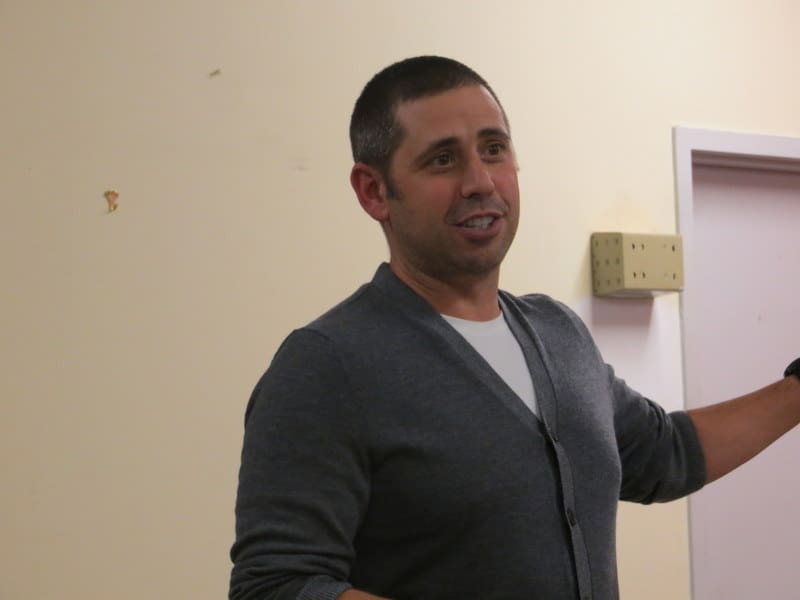
EPA law mandates that these improvements be paid for by the parties responsible for the contamination, which in this case includes the City.
The Gowanus Community Advisory Group (CAG) was set up as the local watchdog of the project and is composed of sixty interested community groups and individuals. The CAG has been meeting monthly for over five years and is kept abreast of the Superfund project by the EPA cleanup team consisting of Project Manager Christos Tsiamis, attorney Brian Carr and Community Involvement Coordinator Natalie Loney.
December’s CAG meeting turned out to be a spirited affair as Alloy, a local real estate developer, made a presentation that one CAG member called “too good to be true.”
There has been a lot of back and forth between the EPA and NYC on the location of one of the two retention tanks that will hold the sewer overflows. A retention tank is a large underground concrete building which is built to hold the overflows until the pipes to the wastewater treatment plant are ready to do their normal work. The EPA wants one of them to be placed at the north end of the canal and have suggested placing it under the swimming pool in Thomas Greene Park.
Thomas Greene Park sits on a parcel of land that once housed a Manufactured Gas Plant (MGP). MGP’s produced methane gas used once used for lighting and still used for heating and cooking. At one time, this gas was produced from coal and petroleum products. The toxic byproduct of this process is coal tar. The EPA found coal tar under the swimming pool and has ordered the pool dug to remove the poisons. The EPA believes the best place for the tank is under the pool, which will be dug up no matter what happens.
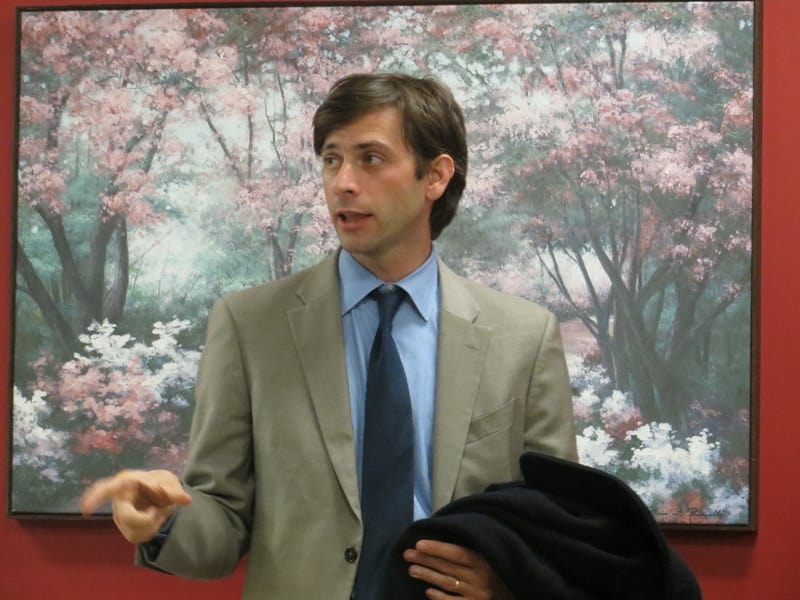
The City agrees that this is a viable location. But their preferred solution is to seize buildings across the street that are adjacent to the canal, demolish them and locate the tank there. The rationale is that this is less expensive and will take less time. The EPA is not convinced and they are going over the numbers. In addition, the EPA hates to use eminent domain, which it views as a last resort.
The city also insists that an accompanying above-ground building, called a head house, be built as well. This is to ensure a minimum of smell in the area as the tanks are being cleaned. It the tank is built in the park, the head house will have to be in the park as well, which will reduce the size of the park. The EPA says that the head house need not be as large as the city claims, and that creative design could incorporate parkland as part of the building, perhaps on the roof.
Entering into this mix, Alloy, a successful Dumbo-based real estate developer , offered a third way.
The Alloy presentation was made by company president Jared Della Valle. Della Valle is a descendent of Saverio Della Valle, who came to Brooklyn from Naples in 1905 and set up a successful Columbia Street business, Valley Candles, which manufactured religious candles.
Della Valle’s proposal is elegant in its simplicity. If the threatened property is not seized by the city using eminent domain, he will lease it from the owners for 99 years. His plan is to build two four-story office buildings, one on either end of the land. In order to build four stories, he cannot build in the middle, according to FAR zoning rules. He will donate the middle space to the city for use as a park. This would more than make up for any loss of park space in Thomas Greene Park (across the street) that a head house would use, eliminate the need for eminent domain, and allow him to build needed Gowanus office space.
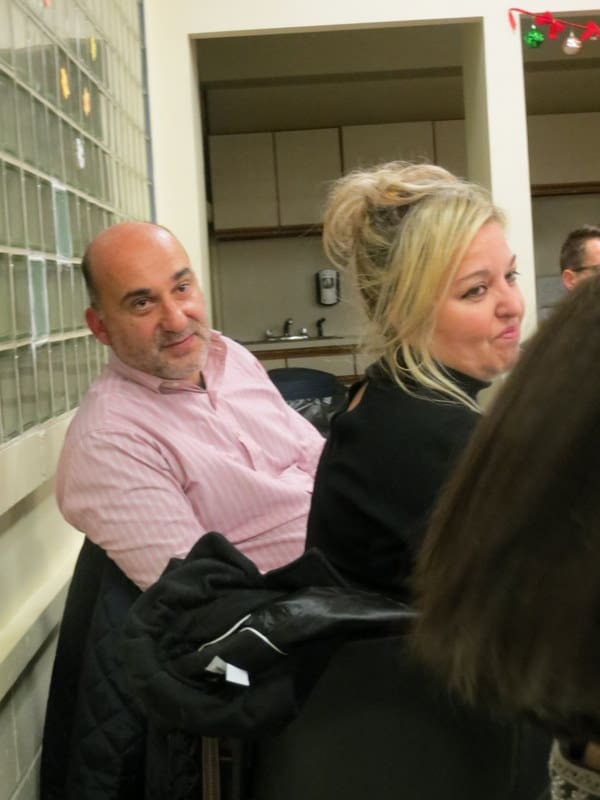
He explained that his company ethos demands vision, thoughtful design and lasting value. He brought the property owners to the meeting, and it was evident that they stood 100% behind this use of their property, which would allow them to retire and ensure an income for their families over the next few generations.
Della Valle told the Star-Revue that prior to the meeting he had had multiple meetings with the EPA’s Tsiamis. He had also met with DEP and the Parks Department, but had not heard back since an initial meeting. He was excited to find out that both DEP and Parks requested to make presentations following his, and he listened with interest as Brooklyn Parks Commission Kevin Jeffrey began to address the CAG.
Jeffrey began by saying that the EPA and the city are not far apart. The rest of the presentation, which included comments by DEC Associate Commissioner Eric Landau, as well as a civil engineer and eminent domain attorney brought in by DEP, showed that indeed EPA and the city remain worlds apart. In fact, they barely acknowledged Alloy, instead, they focused on why Thomas Greene Park is not suitable for storage tanks, despite the fact that a $50 million DEP study identified the park as one of two suitable locations.
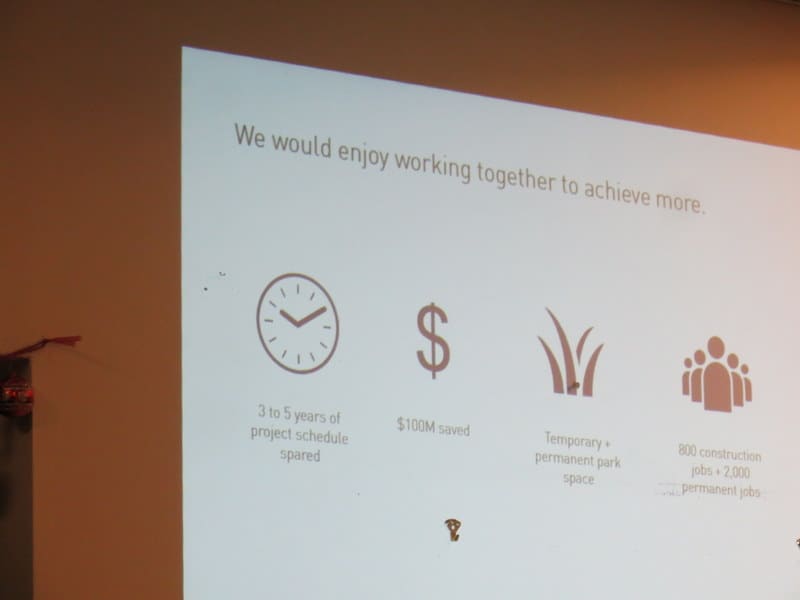
The city’s presentation was a continuation of a month’s long campaign to place extreme political pressure on the EPA, who, as a federal agency, has the final word. A previous CAG meeting featured the DEC commissioner Emily Lloyd as well as Mitchell Silver, NYC Parks Commissioner, as well as a roomful of lesser functionaries. They have sponsored two separate trips to sewage overflow facilities that they operate. They have made private presentations to local politicians and the Fifth Avenue Committee. And many in the CAG are suspicious of the presentations, which claim that using eminent domain rather than using the park is less costly and will take much less time.
DEP brought out a bit more artillery, now claiming that piping would be much more efficient were the tanks placed closer to the canal. They said that the building of connecting pipes from the park to the pumping station would create a tremendous disruption. They presented a slide show of what they called a schematic, to make the point that a head house needed to be at least a 30,000 square foot structure. Faced with a donation of 57,000 square feet of parkland to more than counter a possible loss of only 30,000 square feet, they proclaimed that were they to place the tanks and headhouse on the contested property, they would gain upwards of 75,000 square feet of parkland.
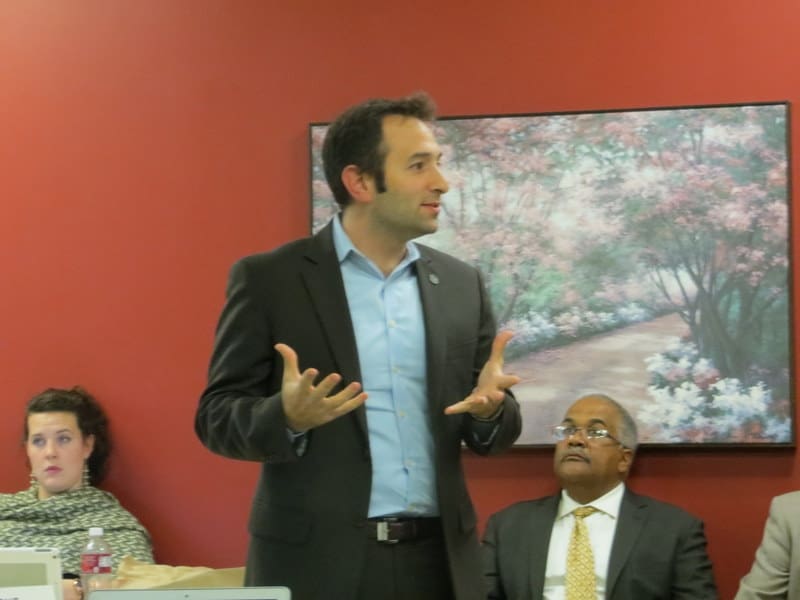
Katia Kelly, CAG member and publisher of the community blog “Pardon Me for Asking,” summarized the feeling of much of the room following the presentations.
“These guys came with real creative solutions, and you shot them down,” she said, addressing Landau.
Dan Wiley, Congresswoman Nydia Velazquez’ s Community Coordinator, called Alloy a white knight, and urged the city agencies to keep an open mind.
Natalie Loney, EPA’s Community Involvement Coordinator, reminded everyone that they are committed to finding a creative solution providing full remediation with a minimum of delay. What they are not in support of are hindrances, she said.
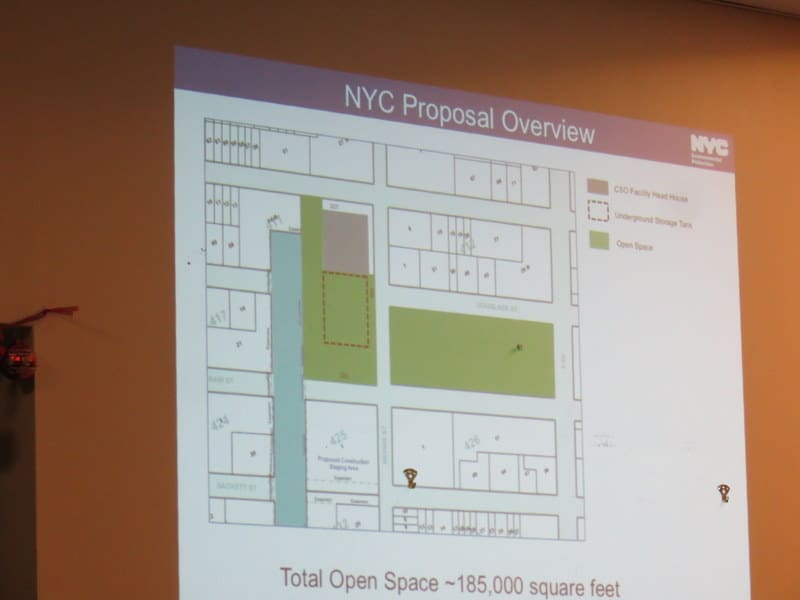
Steve Levin, the council member representing Park Slope and parts of Gowanus, arrived with little fanfare and listened to much of the presentation from the back of the room. He finally asked to speak, and echoing Brad Lander speaking about Cobble Hills problems in dealing with the aftermath of the closing of Long Island College Hospital, announced that neither option is good. Neither eminent domain or losing park space. He did not seem to acknowledge the third option presented, instead focusing on the importance of contiguous park space and the danger of losing parkland.
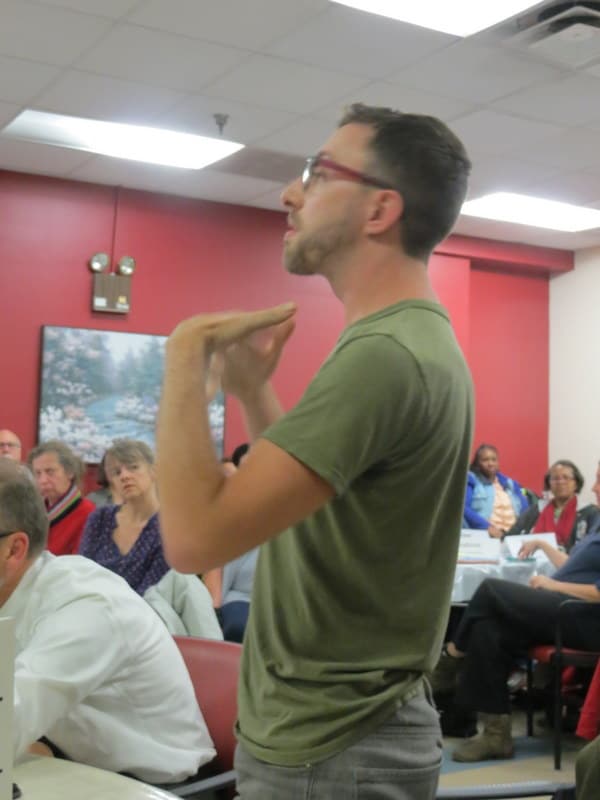
At a previous CAG meeting, Project Manager Tsiamis explained that there are two sides of the EPA, the scientific side and the political side. He intimated that the final decision as to the placement of the retainer tanks will rest with the political side.
The next CAG meeting is scheduled for January 19. For more information about the Gowanus CAG, contact Natalie Loney at (212) 637-3639 or loney.natalie@epa.gov.









3 Comments
Could someone elaborate on the future of the “parkland” offered by Alloy after the 99-year lease is up?
The donation would be permanent, this was asked at the meeting and the landowners said they would sign a letter releasing the land to the city permanently.
The primary reason DEP now offers for the reason to spend mega millions on acquiring three blocks of land is to avoid the messy work of digging up the street to connect pipes from a tank under the park?
It seems that the reasons for the DEP position are always changing, first it was all about not digging up the pool because it was somehow more fair to leave the community with a pool sitting in a vat of toxic waste that to go without a pool for a while. But with the pool coming out to remove the chemical in the park, we then here there is an issue of reducing the park foot-print with a DEP structure; and now that the developer offers land to more-then compensate for the displaced park, we get the story that is is inconvenient to dig up the street.
Much much busier streets in this city get dug up for long periods of disruption for far less noble reasons that to carry out a Superfund Cleanup. So what really gives here? Is it worth tens of millions of city dollars to avoid digging up the lightly used Nevins Street?